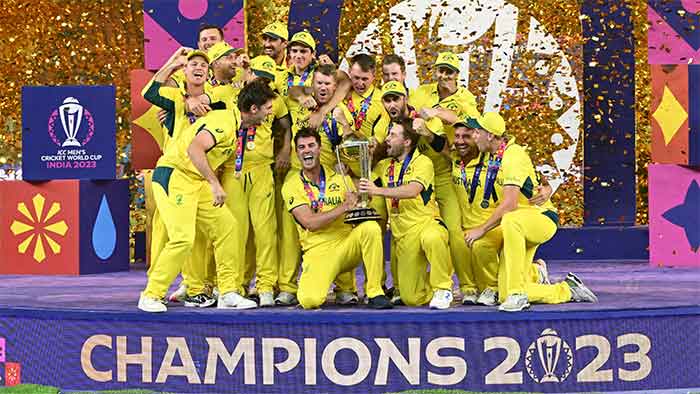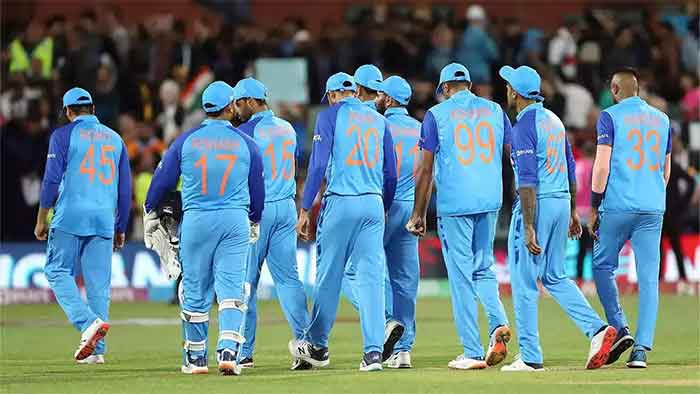
Cricket writer and former cricket correspondent of ‘The Times’ John Woodcock left us a few days ago, just on the verge of turning 95 in August. It is hard to describe the magnitude of affection cricketers, writers and enthusiasts of the game expressed for him. The game truly lost an ornament.
In his schooldays he revealed adept skill in games like cricket and squash. It is ironic that as a schoolboy at the tender age of 15, Woodcock was on the verge of losing his life A devastating blister turned into septicaemia or septic arthritis on his toe. Three major operations rescued his life. He paid scant attention to academics at Oxbridge, being completely distracted by the game. Without doubt his experiences in playing the game played a major role in shaping his astute analysis of it as a writer, later. Woodcock received his first baptism in cricket writing from Jim Swanton. He became cricket correspondent of the Times in April 1954, holding that post till the end of 1986.
Arguably John Woodcock was the best cricket writer of them all. Rarely did a sports writer exude such grace, originality or conviction or such a simplistic, descriptive or communicative style. His writings would do almost perfect justice to any cricketer, personality or team. Probably no writer elevated cricketing energy to such a degree, on par with the most entertaining players themselves.
John Woodcock was a master in giving a long term perspective to any major story .Few ever watched day’s play with such a depth of intensity or concentration, as though sitting in meditation. Perhaps no one reported cricket with as clinical precision. No point would ever evade his notice and he would bring out some that a common observer always missed. Woodcock resembled a doctor doing a diagnosis of a patient with surgical precision, delving into areas unexplored. His accuracy in reporting was simply mythical.
Woodcock was an ideal example for all cricket writers to emulate, with his most rhythmic or balanced style, not over indulging in praise or criticism. It would have been appropriate if Woodcock has started a cricket writing school, which could have moulded a generation of cricket journalists
Liveliness was a most consistent feature in his writing, never being monotonous. He incorporated the essential flavour of humour in his writings, giving audiences many a laugh.
Woodcock was so communicative that one almost felt that it was his soul speaking. The flow in his writing could be poetic or lyrical, taking cricketing prose to untapped regions. Above all Woodcock was living proof that cricket writing was an art itself, as aesthetic as the very game itself. He enriched the art of sport’s writing as few ever did.
Even at such an old age in his photograph, the joy that brimmed in his heart through the game was written on John Woodcock’s very face.
I place his book on ‘100 greatest Cricketers ‘written in 1997, as one of the game’s classic books. It is a must read for any cricket lovers library. With most precise analysis and sky deep probing into the character of the player’s style, Woodcock displayed his phenomenal insights into the game. He did not just delve in statistics or charisma, but ranked them in terms of relative impact or creative contribution to their eras. Woodcock arguably made the shrewdest judgement of any cricketing expert. What I appreciate most is the respect Woodcock gave to the Golden age of cricket, doing justice to the game being an art rather than a million dollar business. In a matter of a few words covered in less than a page, Woodcock illustrates the distinctive features of all the stars. Overall I praise the respect Woodcock gave to the older generation, who made a greater contribution to promoting the aesthetic factor in the game. The foreword of this book most classically introduces the criteria he deployed to make his choices and rankings. Woodcock delves on the evolution of the game in deep depth. No cricket writer displayed so much respect to the game’s aesthetics when evaluating the choices and rankings of 100 best ever. Few works better illustrated how cricketing views are so subjective.
In ‘100 Greatest Cricketers” I revered his choice of placing legendary W.G.Grace at the very top, ahead of even Bradman, I admired his recognition of the sheer genius of Denis Compton, Ted Dexter, Brian Lara Rohan Kanhai and David Gower as well as the all-round cricketing prowess of Sobers, Botham, Imran Khan and Kapil Dev. Most vividly he captured the essence of the destructive batting character of Viv Richards, the sheer beauty of the bowling of Michael Holding, the perfection of Barry Richards, Sunil Gavaskar or Len Hutton or the talent of Sachin Tendulkar.. In my view his fairest rankings were awarded to players like Javed Miandad, Rohan Kanhai,,Victor Trumper,Barry Richards,Ian Chappell,Graham Gooch ,Wes Hall and Kapil Dev.I also praise his inclusion of Hanif Mohammad, Vinoo Mankad and Aravinda De’Silva.
His most controversial or questionable rankings in choice of Best 100 to me were ranking Ian Botham at 10th place.Michael Holding as the greatest of West Indies bowlers, Ted Dexter ahead of Tendulkar,Lara and Weekes ,or Frank Woolley in 13th place. Arguably Woodcock did reveal a bias towards English cricketers, be it in comparison of Botham with Imran, Hutton with Gavaskar, Sydney Barnes with Shane Warne or choosing Bob Willis instead of Andy Roberts or Joel Garner. I feel he ranked Malcolm Marshall too lowly at round 70th place, or even Greg Chappell at around 40th place. Arguably he unfairly excluded the likes of Zaheer Abbas, Andy Roberts, Gordon Greenidge or Vijay Merchant but then the game is all about opinions.
I can never forget his tribute to Sunil Gavaskar in a collection of tributes by cricketers and writers. Woodcock with the most clinical precision of a surgeon illustrated why Sunny was virtually the epitome of perfection in batting .His description of Gavaskar batting at Old Trafford on a wet track, touches your heart. Without hesitation Woodcock classed Tendulkar as the Bradman of his age, ranking his 115 at Perth in 1991-92 as the closest he ever saw to Bradman.Woodcock felt that Brian Lara had more talent than anyone who could compose surreal strokes. However to me his best harassment was that of the West Indian maestro Rohan Kanhai .In Woodcock’s view in full flow Bradman,Kanhai batted more like Bradman than any batsman and had he done full justice to his talent could have averaged close to Bradman. In similar light Woodcock portrayed the genius of the diminutive but evergreen Gundappa Vishwanath.
It is significant that Woodcock was vocal critique of Kerry Packer World Series cricket introduced in 1977.With strong conviction he expressed how it robbed the game of it’s gentlemanly spirit or artistic value and promoted crass commercialism. His confrontation with Kerry Packer is permanently embedded in my mind, where he attacked the concept of World Series Cricket at the very core.
I would love everyone to read cricket writer Henry Blofeld’s tribute to John Woodcock. In his book ‘Cricket’s Greatest entertainers;’ with deep insight he portrays the very essence of Woodcock, and the impact he made on other writers or fans of his generation. Blofeld sums up how Woodcock transfused life into cricket writing as none else, keeping an audience in suspense as nobody. Without fail I would recommend fans to read the outpouring of tributes by former cricketers in the Guardian.
Quoting Henry Bolfeld “He brought to cricket writing common sense and complete lack of pretentiousness .Wooders knew his own mind and was always faithful to to it, never relenting to pressure from cricket’s authorities.”
“Noone who has spent a day in the press box sitting next to Wooders could help but be richer for the experience, a more shrewd observer of the game at the end of it.”
“A day at the cricket with Wooders is not to be missed and an evening with Wooders is compulsory if given the chance. My own life in cricket would have been infinitely the poorer without the company of Wooders and I would not have had half the laughs I have ever had. He is one of the great men.”
I would love to read a biography of John Woodcock, projecting his evolution as a cricket writer. or how cricket transformed his life. It would also be fascinating to know about his relationship with other characters of the cricket world.It would also have been by ultimate wish to have read a book by Woodcock in his lifetime on ‘The Most artistic batsmen and bowlers ever’, a biography of Gary Sobers, Rohan Kanhai ,CLR James and Ted Dexter and his reminiscences of seeing the game of Cricket in India. They simply would have been soul searching classics.
John Woodcock’s writings should be compiled into a single book, which would have a permanent place in a cricketing museum.
Harsh Thakor is a freelance journalist.Toured India,particularly Punjab .Written on Mass movements ,,Massline,Maoism on blogs like Democracy and Class Struggle and frontierweekly .An avid cricket lover too who has posted writings on blogs like Pakpassion Indian Cricket Fans and Sulekha.com















































